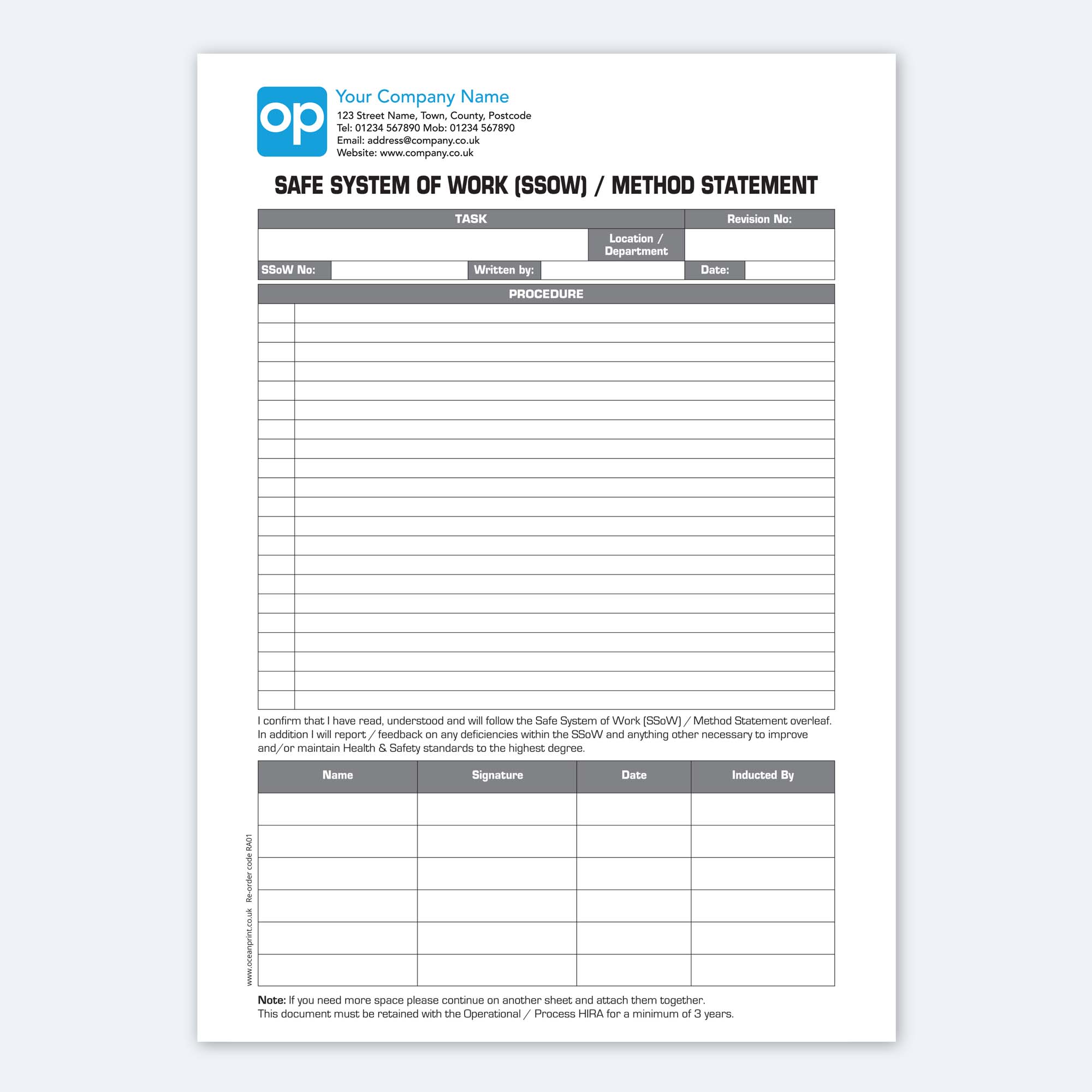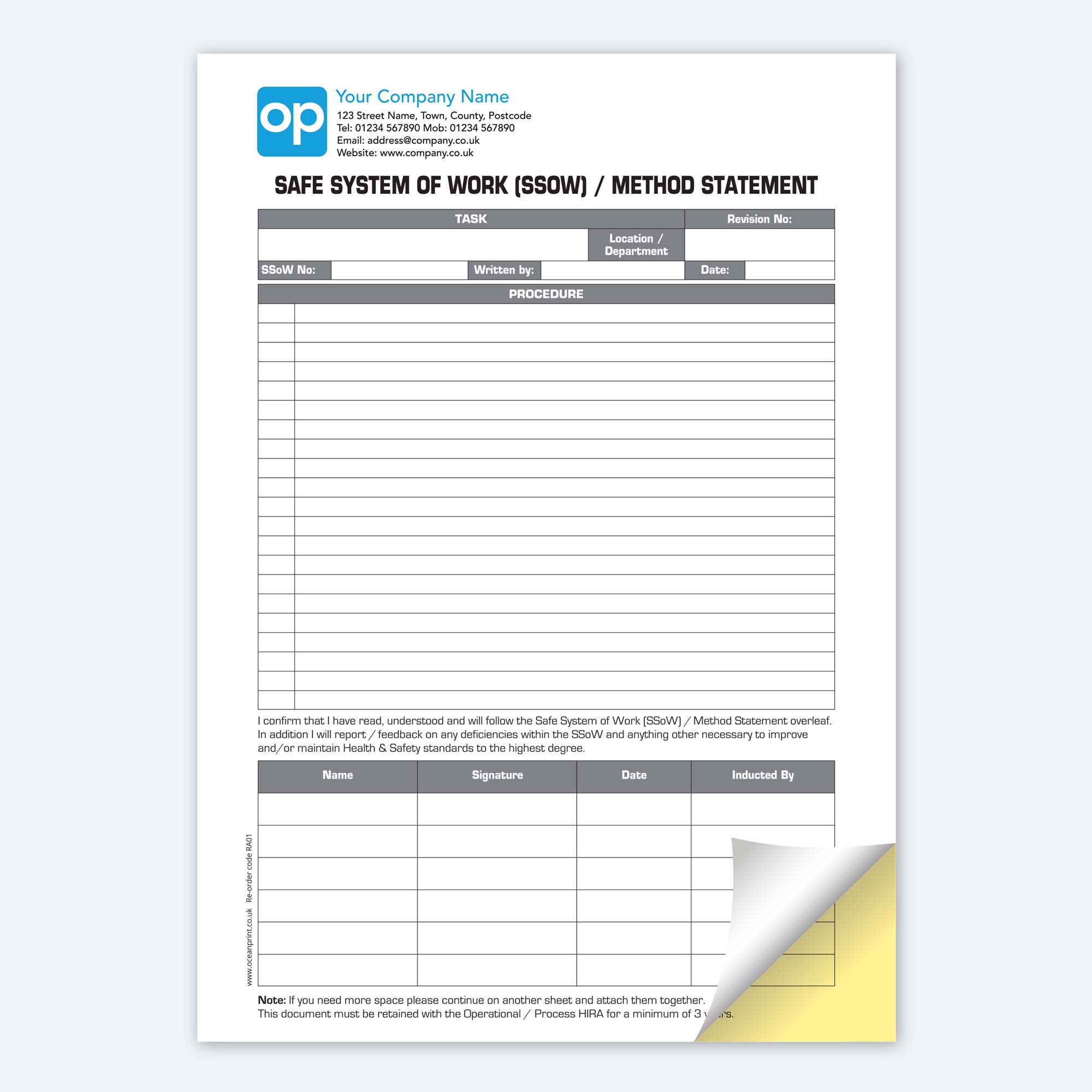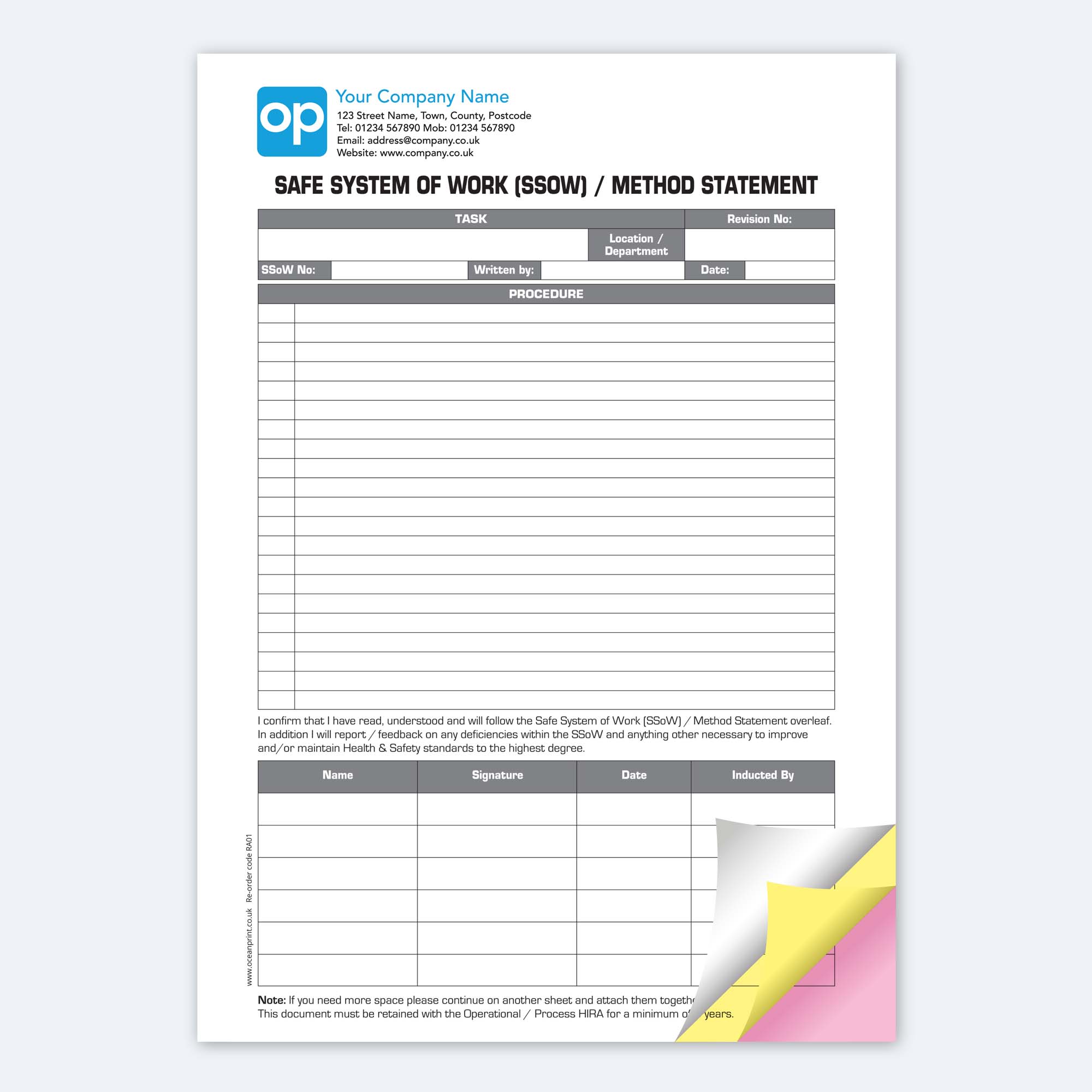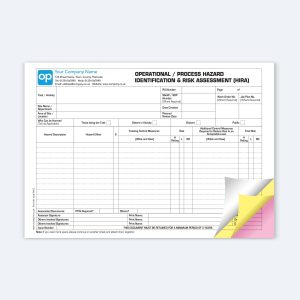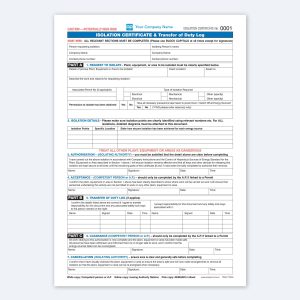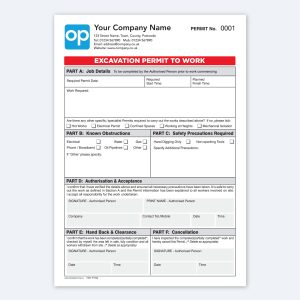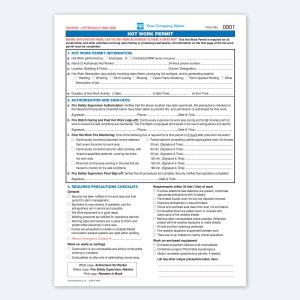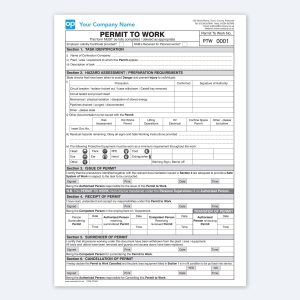Safe System of Work (SSOW) / Method Statement (RA01)
£0.74 – £75.00 ex. VAT
ITEM: RA01
NOTE: This form is commonly used in partnership with ITEM: RA02 Hazard Identification and Risk Assessment (see below).
A snapshot of key features:
- Task
- Location / department
- Procedure
- Job completion status (Yes or No)
- Logging a comprehensive description of work performed
- Tracking materials needed
- Recording travel time, site arrival, and departure times
- Signatures from both the engineer and the customer
- Noting any additional work required
- Tracking materials and parts required, including part/serial numbers.
Product features: Personalised with your company branding | A4 210mm x 297mm | Single colour or full colour | Available in duplicate or triplicate carbonless NCR | Sequential numbering (optional) | 50 sets in every pad and book | Pads, books or glued loose sets | Writing shield with every NCR pad and book
Ready to personalise? Once your order is placed our Studio Team can personalise the Safe System of Work (SSOW) / Method Statement by adding your company branding. The Studio Team can adjust other parts of the template to suit your requirements – just let them know in the notes when placing the order. You’ll receive a PDF proof for approval before printing commences.
Order Safe System of Work (SSOW) / Method Statement (RA01)
Related Products
Can't find what you're looking for?
Safe System of Work (SSOW) / Method Statement
A Safe System of Work (SSOW), often referred to as a Method Statement, is a structured document that outlines the safe procedures and steps to be followed when carrying out a specific task or job. Its primary purpose is to ensure that work activities are conducted in a safe and controlled manner, minimising risks to workers, the public, and the environment. Safe Systems of Work are commonly used in various industries, including construction, manufacturing, and any other field where hazardous or complex tasks are performed.
Key components of a Safe System of Work or Method Statement typically include:
- Task Description: This section describes the specific task or job to be performed, including its scope and objectives.
- Hazard Identification: Identifies potential hazards associated with the task. This includes both immediate risks to workers and potential risks to the environment or the public.
- Risk Assessment: Evaluates the identified hazards by assessing their likelihood and severity. Risk levels are often categorised, and control measures are determined to reduce or eliminate these risks.
- Control Measures: Describes the measures and precautions that will be put in place to control and mitigate the identified risks. This may include personal protective equipment, safety equipment, training, and procedures.
- Safe Work Procedures: Provides a step-by-step description of how the task should be carried out safely. This section may include details on equipment usage, work sequences, and emergency procedures.
- Competencies and Training: Specifies the necessary qualifications, training, and experience required for the personnel performing the task.
- Emergency Procedures: Outlines the actions to be taken in case of emergencies, accidents, or unexpected incidents.
- Permit to Work: In some industries, a permit-to-work system may be integrated into the SSOW, requiring specific authorisation before commencing the task.
- Sign-off and Review: Documents the names and signatures of individuals responsible for the task and its safety, along with a review process to ensure the document remains relevant and up-to-date.
Safe Systems of Work are essential tools for ensuring workplace safety and compliance with regulations. They provide a framework for both workers and supervisors to understand and follow safe procedures. These documents are particularly crucial for high-risk or complex activities, as they help prevent accidents, injuries, and damage to property or the environment while promoting a culture of safety in the workplace.
Trusted Supplier to UK Businesses
Expert Customer Service
Quality Guaranteed

